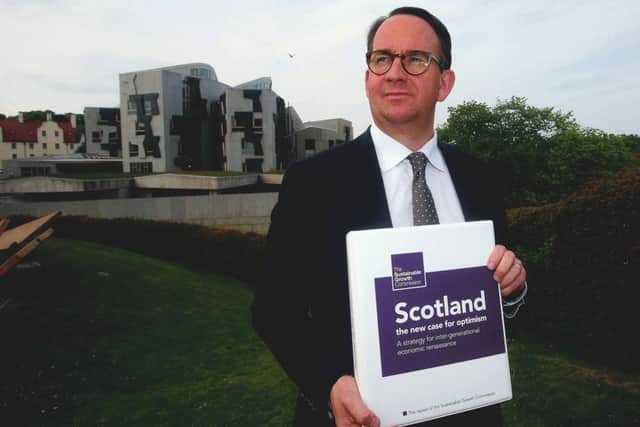Ian Swanson: If Growth Commission is realistic, then so is independence
and live on Freeview channel 276
It accepts oil tax revenues can no longer be relied on to fund general spending. It acknowledges banks are likely to move their headquarters south of the border. And it warns Scotland would need “robust” controls on public spending for up to ten years to bring the deficit down.
But despite appearances, this is not a negative verdict on independence.
Advertisement
Hide AdAdvertisement
Hide AdCommentators have contrasted the “realistic” picture of independence painted by Mr Wilson and his Sustainable Growth Commission with the more upbeat message of the 2013 White Paper published in the run-up to the referendum.


But arguably the comparison should not be between this report’s picture of independence and the White Paper’s version, but between what Mr Wilson says independence can achieve and the prospects for Scotland inside the UK. That, after all, is what the debate is all about.
And Mr Wilson leaves us in no doubt about his take on the big picture. Despite his estimate that it could take ten years to bring the deficit down and a generation to match the economic performance of other successful small countries, he says: “The process of producing this report has made me believe more than ever, that independence is the best option for Scotland’s future.”
He argues that independence is a “necessary but not sufficient” step to success and emphasises it will be the choices made after that which decide what Scotland will be like in future.
Advertisement
Hide AdAdvertisement
Hide Ad“Independence must never be seen as a magic wand or quick and easy step to success,” he says. “There is no pot of gold, black or otherwise, at the foot of the independence rainbow. But there is a toolbox and using it will mean taking responsibility for choices that seek to create a stronger economy, sustainable public finances and a fairer society.”
The commission’s report tries to settle some of the concerns voters had at the time of the 2014 referendum. It says taxes raised in Scotland are sufficient at present to fund all devolved services plus welfare and pensions.
On the vexed question of the currency, it proposes continuing to use the pound without a formal UK-wide currency union and working towards a new Scottish currency once six strict criteria are met.
And lest anyone think he wants an independent Scotland to walk away from inherited responsibilities, the report includes a proposal for a £5 billion a year “solidarity” payment towards Scotland’s share of UK debt.
Advertisement
Hide AdAdvertisement
Hide AdThe report argues the centralised nature of the UK economy, with too much activity in London and the south-east, is holding Scotland and other parts of the country below their potential; Brexit represents “a clear and present danger”; and Scotland must be able to decide its own policies. Mr Wilson declares: “The risks for Scotland are all in doing nothing.”
If commentators and the public accept Mr Wilson’s diagnosis of the challenges facing an independent Scotland as a realistic assessment, perhaps they also need at least to take seriously his conclusion that independence is still a better prospect than carrying on with the status quo.
